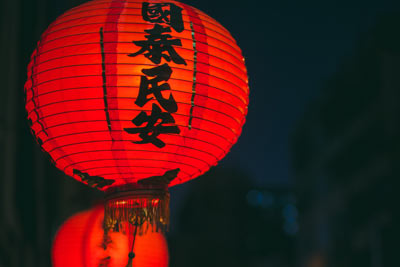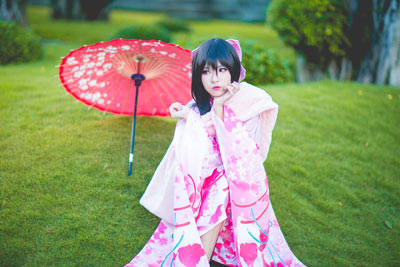Asian Wedding Traditions
AsianCulture & Traditions
AsianCulture & Traditions
Traditions

Cultural Information
In 1990, Chinese Americans formed the largest Asian American group, followed by Filipino Americans, Japanese Americans, Asian Indian Americans, Korean Americans, Vietnamese Americans, Cambodian Americans, Thai Americans, and Hmong Americans. Pacific-Islander Americans are comprised of native or part native Hawaiians, Samoans, Guamanians, and Tongans.
Japanese immigrants call themselves Issei, and their American born children – Nisei. The Sansei and Yonsei are the third and fourth generation Japanese Americans, respectively. This generation is very acculturated, with the highest out marriage rate among all Asian Americans.
Major Religious Beliefs
| Cambodia | Khumer 90% Chinese 5% Other 5% | Theravada Buddhist 90% Catholic, Mahayan Buddhist, Islam |
| Taiwan, Republic of China | Taiwanese 84% Mainland Chinese 14% Aboriginal 2% | Buddhism, Confucian, Taoist, Christian, Islam, and others |
| China, People’s Republic of | Han Chinese 93.3% Others 6.7% | No official religion, Buddhism, Christian, Islam growing |
| Hong Kong | Chinese 98% Others 2% | Buddhist, Taoist, Christian |
| India | Indo-Aryan 72% Dravidan 25% Mongolois 3% and Others | Hindu, Theravada Buddhist Catholic, Mahayan Buddhist, Islam |
| Indonesia | Javanese 45% Sundanese 14% Madarese 7.5% Malay 7.5% | Moslem 85% Christian 10% Hindu 5% |
Shinto Style
A Japanese wedding ceremony usually takes place in a Shinto shrine or in a chapel. weddings typically are held in the Spring and Fall. Very often the ceremony is held in conjunction with multiple other weddings taking place. weddings are often scheduled on a day of fortune as listed in the almanac.
The marriage system seems to have gone through various changes. The system, however, is said to have been made from the “Muko-iri” practice for a bridegroom to enter the family of his aimed-at bride to the “Yome-iri” system for a bride to be accepted into her bridgeroom’s home.
During the age of aristocracy, a bridegroom would nightly visit his bride at her home. Only after the birth of a child or the loss of parents to the bridegroom or husband, would the bride be accepted as the wife in the man’s home. It was an accepted norm in northern Japan for the bridegroom to live with the bride’s family to offer his labor for a certain period of time. This practice is still being done today for a man to become a member of another family by marriage.
After many nightly visits of a man to the home of his bride to be ,her parents might invite him to their bedside and offer “Mochi” rice cakes. This ancient wedding custom, called “Tokoro-Arawashi”, was a most important function. After the 14th century, marriages came to be arranged by and for families by a “Nakodo” (a go-between).
Similar to African culture, the Nakodo would assist in the engagement. This person would see to the ceremonial exchange of drinks with the bride side immediately upon acceptance of the proposal. “Yui-no” betrothal is still being observed. At the Yui-no, gifts are exchanged between the bridegroom and the bride. The main item to be presented to the bride is an “Obi” (a sash) which represents female virtue. A “Hakama” skirt is returned to the groom which express fidelity. The Yui-no gifts, in addition to the Obi and Hakama (a long pleated skirt of white Sendai silk), will include as many as nine items of happiness and fortune. These gifts are accompanied by a list of family members, as they are exchanged between the two families through the go between on a “lucky” day of the almanac.
According to Shinto tradition, the ceremony is performed in a sanctuary, either set up for the occasion or in a Shinto shrine. If the ceremony is being held at home in the Shinto style, a temporary sanctuary is set up on the Tokonoma alcove.
The families of the couple enter separately to the altar where there are offerings of rice water, salt, fruit and sake – everything to sustain life. The Shinto priest stands to the right of the altar, and to the left, the miko.
The bride and groom are seated in front of the priest with the go between directly behind them, and then the families behind them in age order.
The Shinto priest begins with a purification service of all present. The priest shakes a paper-decorated staff over the altar, bride and groom, and then all the guests. The wedding is attended by members of both families, close relatives, the go between and the couple. After the priest offers words on marriage, and asks for those present to give favor to the marriage, the San-San Kudo (or the ceremony of the Three Times Three exchange) of nuptial cups is next. Shinto serving girls, Miko, serve sake (rice wine) dressed in red and white dresses. Three stacked sake cups are placed before the bride, who sits beside the groom. They each take three sips from each cup, three times. At the conclusion of this elaborate ritual the couple is considered to be married. The couple then steps forward and the bridegroom will read an oath of faithfulness and obedience to be shared by the couple. The go between may also read the oath.
Sake is then exchanged between members and close relatives of both families to signify their union through the wedding. The couple may then exchange wedding rings. The bride and groom proceed to the sanctuary to offer decorated twigs of Sakaki (a sacred tree in worship to gods). In some ceremonies, the rings are exchanged here. This ends the main part of the ceremony.
Buddhist Style
A Buddhist wedding, as performed at the Honganji Temple, includes a prayer, the presentation of Buddhist rosaries, address by the priest, incense burning, drinks of oath and a Buddhist worship by clasping hands. Buddhist temples were usually not the place for a wedding, they were used for funerals.
Planning
 The Reception
The Reception
A reception, or hiroen, for family and friends follows the ceremony. The reception is usually held in a hotel or restaurant. Guests are seated first and then the bride and groom make their entrance with the go betweens. Short speeches are made by the go betweens, fathers of the couple and a chief guest of the bride and bridgeroom. The go between introduces the bridegroom, the bride and their family backgrounds. Very often these introductions provide more information on the families than on the bride and groom. Stories are told about the couple by older, honored guests, which take up the majority of the wedding festivity.
Red and white is a happy color combination in Japan and this is used abundantly. Colorful candies, Kyogashi, are made into the shapes of flowers and are signs of celebration.
Food and Music
Traditional Japanese foods are sekihan (red rice), kombu (kelp), tai (sea bream, the traditional fish of happiness), and sake (rice wine).
Chinese foods served at weddings are chosen for their phonetic plays on words. For example, the Chinese word for apple is similar to the expression “go safely”, Fat choy sounds like the expression “be prosperous”, and Liem sun denotes the hope for many sons. This particular menu consists of apples, seaweed and lotus-seed tea.
Korean weddings serve Kuk soo (noodles), which symbolize long life. To find out if someone is married, ask “Kuk soo mo-gus-soy-oh?” (“Have you eaten noodles yet?”)
Checklists
Coming Soon
Tips
Coming Soon
Dresses
 The Japanese bride wears a quilted robe – a uchikake, and an under-kimono, with an elaborately tied obi. An attractive custom is the tying of the obi to resemble flowers, for wearing in the month of their bloom. The robe is often with a pattern of cranes, waves and pines (symbols of happiness). The robe is made of white silk jaquard woven with the groom’s family crest, and she wears a special wig. The wig and robe are sometimes handed down in the family.
The Japanese bride wears a quilted robe – a uchikake, and an under-kimono, with an elaborately tied obi. An attractive custom is the tying of the obi to resemble flowers, for wearing in the month of their bloom. The robe is often with a pattern of cranes, waves and pines (symbols of happiness). The robe is made of white silk jaquard woven with the groom’s family crest, and she wears a special wig. The wig and robe are sometimes handed down in the family.
The Japanese groom will wear a white under-kimono, with a black kimono or five-crested haori (short kimono coat) with haori cords on top. The crests refer to the little circular motifs printed or woven into the haori cloth, representing a person’s clan ancestry. Japanese heraldry comprises 400 basic family crests, with over 20,000 sublineages. These little circles are exquisitely varied. This all fits over the hakama and is worn with white tabi (split-toe socks) and zori, or sandals with white toe thongs.
The Japanese bride will change her outfit three or four times during the wedding. First, a white kimono is worn to show the bride’s willingness to adopt the groom’s family. Her head must be covered to hide horns of jealousy. She then changes to a Western style wedding gown. Next she dons a multi colored kimono – a furisode, for the reception. Finally she will change into a Western-style ball gown.
If the bride is Korean, she will wear a delicate crown, or chokturi, beaded and decorated with flowers and tiny pendants. The Korean groom wears a hat for the first time on his wedding day. Men also wear a silken cord, called a sejodae, worn around the chest under the armpits on ceremonial occasions.
The Chinese use an umbrella in their weddings as a covering for the bridal couple. This ancient ritual was to honor and protect the bridal couple as they begin their new life together. (Similar to the canopy used in the Jewish tradition.)
Cakes
Coming Soon
Resources and References
Special thanks to Lois Pearce, Master Bridal Consultant of Hamden, Connecticut, for her time and energy gathering the majority of information used here. We also wish to thank the Association of Bridal Consultants for their assistance.
Please note that the information contained in this category should be considered general in nature. We believe it to be a true and accurate representation of some of the customs and traditions for this country or religion. Information provided by individuals and organizations is assumed to be correct.
You are welcome to email us at join@weddingdetails.com with any suggestions for changes, additions or deletions.
Ethnic Dress by Frances Bennett, Facts on File, 1995Wild Geese & Tea by Shu Shu Costa
Target the U.S. Asian Market: A Practical Guide to Doing Business by Angi Ma Wong, Pacific Heritage Books, 1993
The New York Times, Styles, February, 1995

 The Reception
The Reception